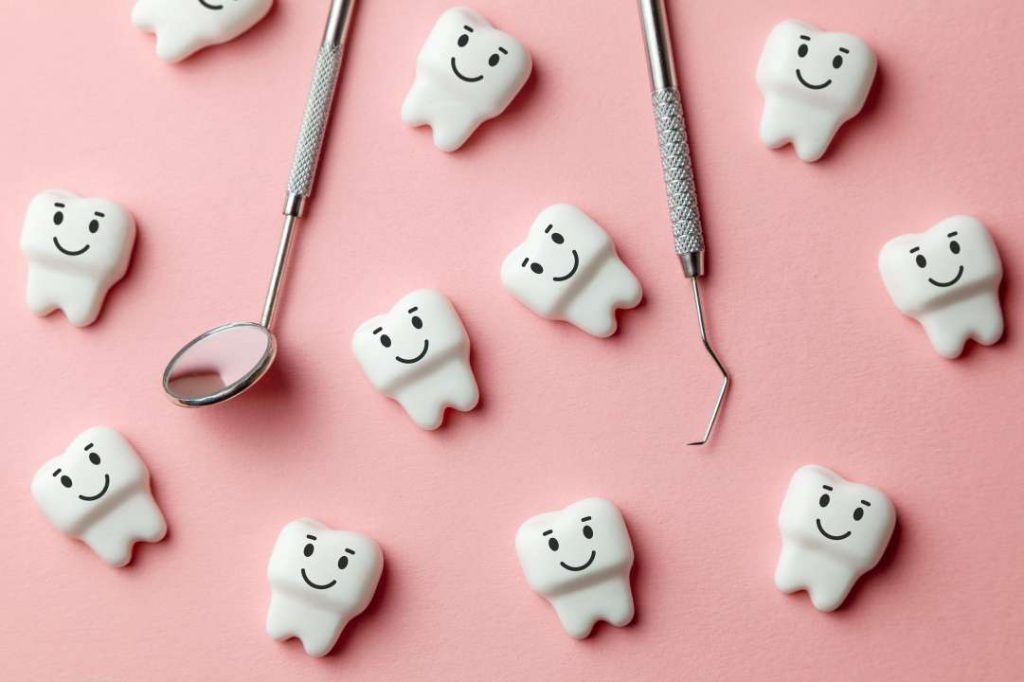A cavity is a permanently damaged area in the hard surface of your teeth which develops tiny openings or holes. These begin to grow as the acid produced by plaque build-up begins to damage the layers of the tooth. At Midtown Dental, we work closely with you to identify and treat cavities before they require more costly interventions, such as root canals or extraction. Depending on the nature, location and severity of damage, your dentist may recommend a dental amalgam, a composite filling, or a crown—keep reading for an overview of how they each work, plus some tips for how to avoid needing them!
How does your dentist find a cavity?
Using both dental x-ray and while doing our annual check up, we identify the cavity and assess the need for fillings. Fillings are the protective substance we used to protect your teeth after removing the decay. There are two different types of fillings that we primarily use; direct fillings made from gold, amalgam, and composite, and indirect fillings such as a porcelain crown or inlay.
The 2 most common types of direct fillings are:
-
Dental amalgam:
These silver-coloured fillings are the most common type of filling used in Canada. Dental amalgam is very strong, safe, and durable and is also the most affordable filling option. They are made from a mix of metals such as mercury, silver, copper and tin. The downside of amalgam is their silver colour, which for many creates an undesired aesthetic, so they are usually used for the back teeth only.
-
Composite fillings:
These fillings offer strong protection while also being very close in colour to your actual teeth. This makes them an attractive option, especially for teeth that are most visible in the mouth. However, these fillings are slightly less durable than amalgam or gold fillings, so we still often recommend dental amalgam for molars––especially for patients who suffer from bruxism.
What is a crown?
A dental crown is a cap which is placed over a tooth which is compromised with decay or injury. A crown is designed to look like a natural tooth; it fully encloses the portion of your tooth above the gum line. There are many materials used for crowns, from stainless steel to resin, but metals or porcelain are used most often.
- Metal: While they are the most durable option, they are often best suited for teeth at the very back of the mouth due to their metallic colour.
- Porcelain: These crowns are durable and are also the best option for matching the colour of your natural teeth. Porcelain is also a less expensive material than gold or silver crowns.
What can I do to prevent a cavity?
Cavities are caused by tooth decay stemming from a combination of factors, including: bacteria, infrequent dental visits, consuming excess sugar, enamel hypoplasia, and poor or inadequate dental hygiene. You can work on protecting yourself from cavities by adopting good oral hygiene practices and scheduling regular check ups and cleaning with your dentist!
If you want to read more about cavities, including how they form, how your dentist finds them, and what you can do to help prevent them, check out our blog.
You and your dentist can work together to find the best solution for you!
Depending on your specific case, and which teeth are affected by cavity or decay, you can work with your dentist to make a treatment plan that is designed for you. Talk to your dentist to learn more about each filling type, and to ask questions about which one will be best suited to you. Remember, the best way to prevent cavities is to visit your dentist once a year for a full cleaning and check-up. Visit our website today to learn more about our services and schedule your next appointment! We’re located conveniently in downtown Saskatoon inside the Midtown Mall, and we’re ready to meet you!




